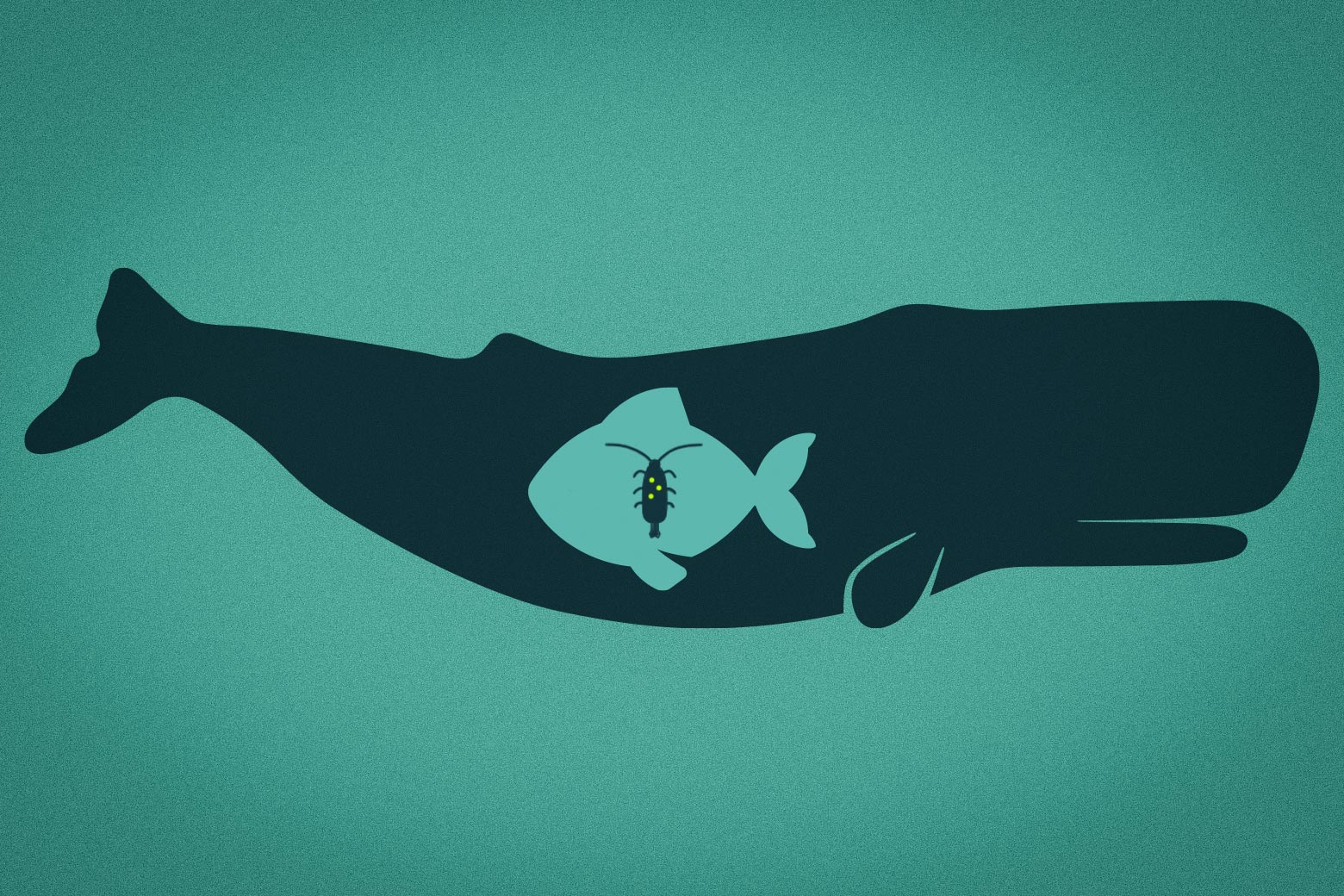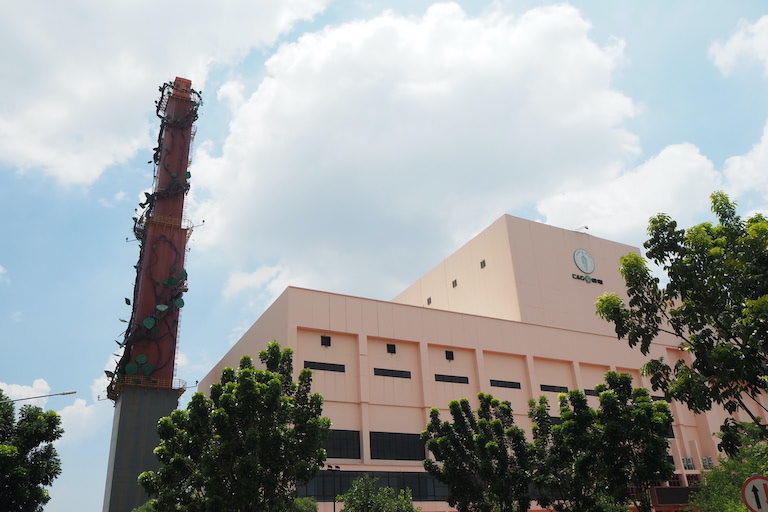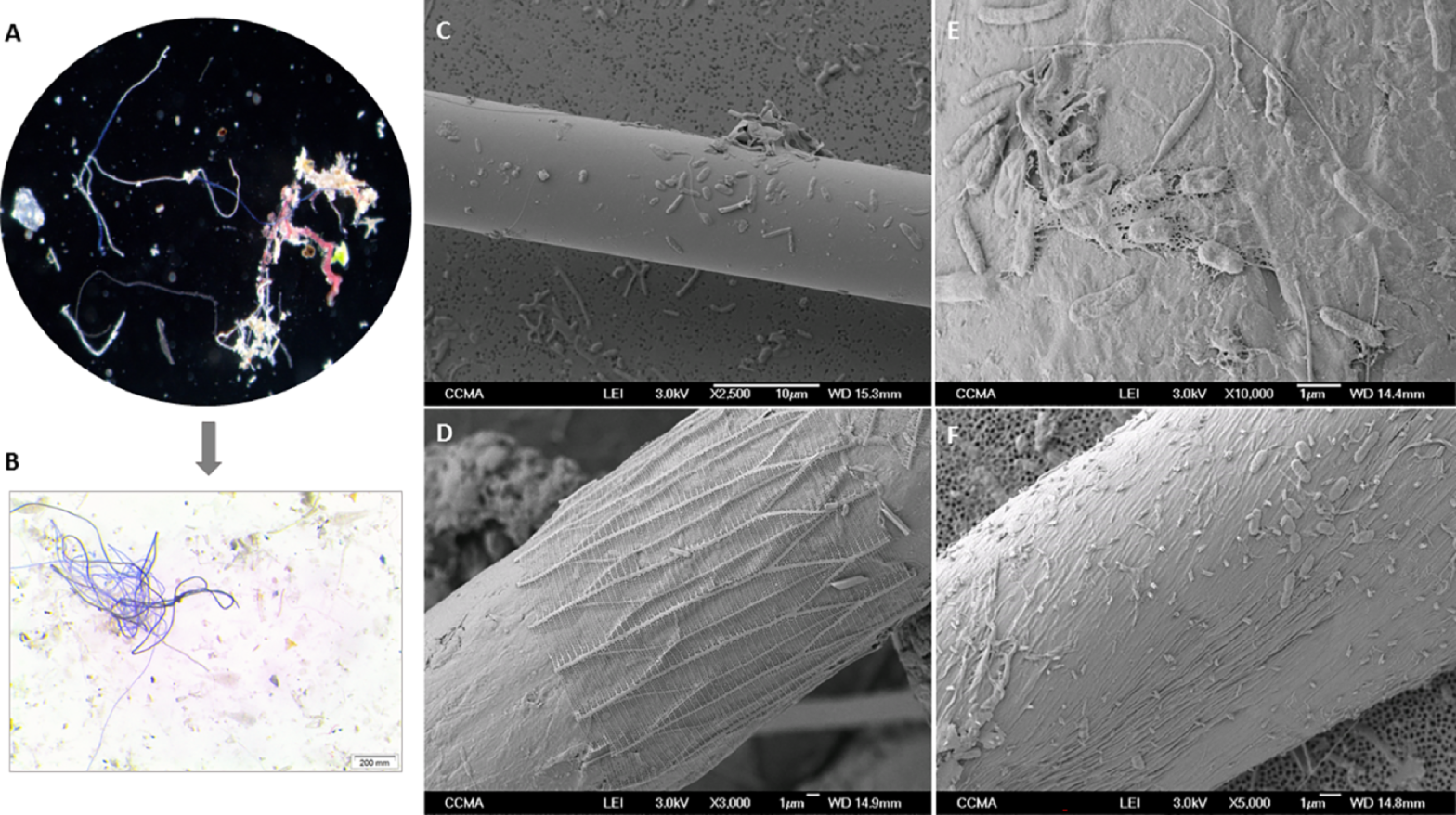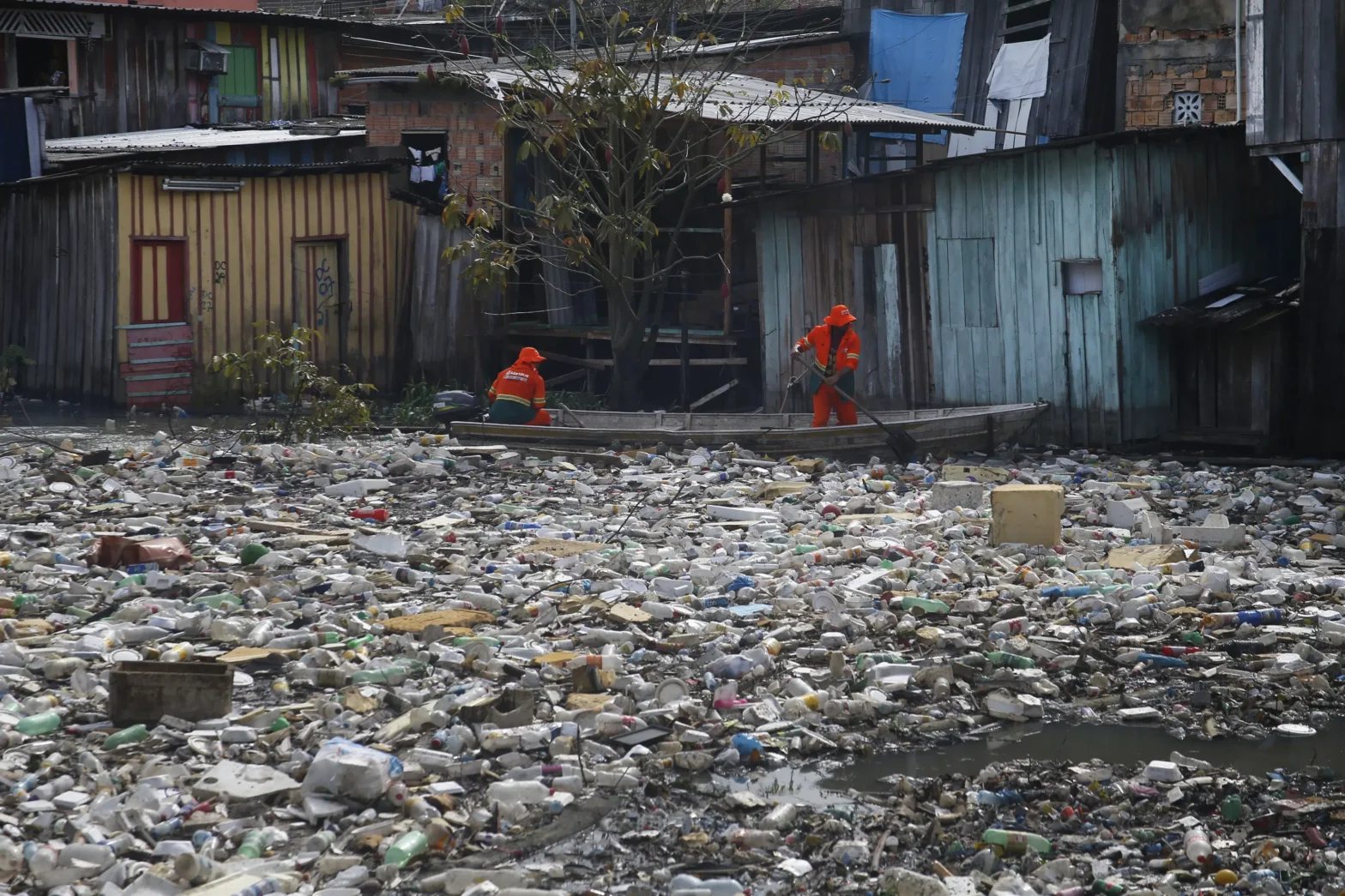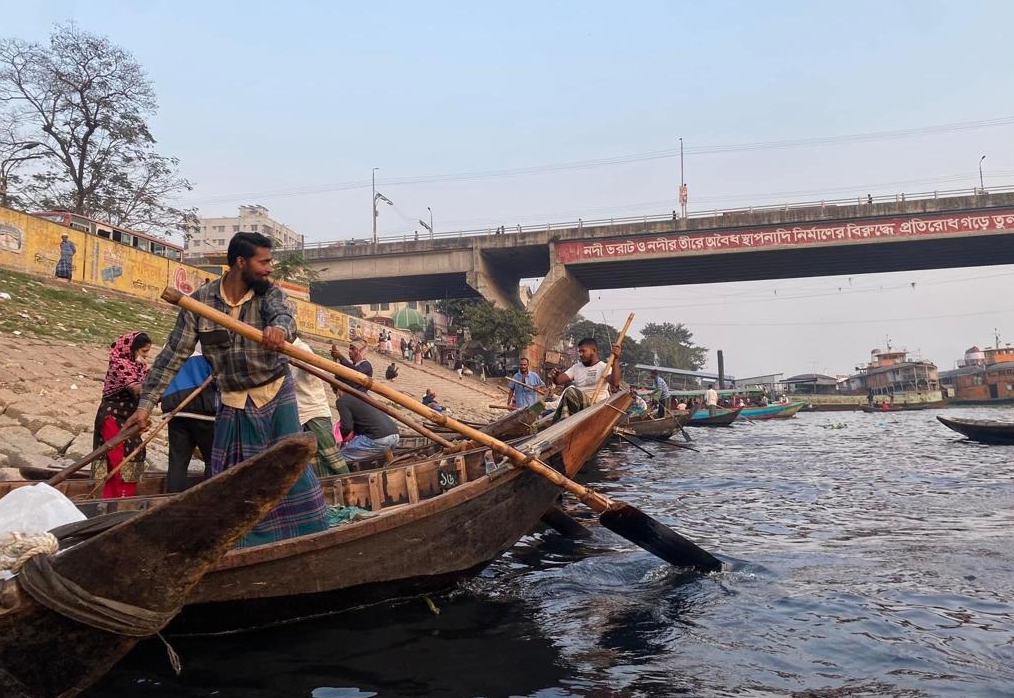Widely in use in countries including Japan, South Korea and northern Europe, waste-to-energy technology is making inroads in Southeast Asia, where it’s presented as a tried-and-tested green energy solution.Thailand plans to build 79 waste-to-energy plants in upcoming years, and there are at least 17 proposed for Indonesia.Concerns about environmental and public health impacts have already led to protests and project delays.In Europe, the technology’s climate-friendly credentials are being called into question, with several countries imposing or considering carbon taxes on waste-to-energy facilities. In 2016, Bangkok opened its first waste-to-energy incinerator in the district of Nong Khaem, turning up to 500 metric tons of solid waste into electricity every day. The 9.8 megawatt incinerator uses technology from Japan’s Hitachi Zosen, and the project aims to be a model for future waste-to-energy plants in Thailand. The government already plans to build two additional facilities alongside a landfill in Bangkok’s On Nut subdistrict.
For Thailand, ranked as the fifth top source of oceanic plastic pollution in the world, addressing waste is a key concern. In 2021, the country produced 24.98 million metric tons of solid waste, of which only 16% was recycled back into the supply chain, according to the country’s Pollution Control Department (PCD). The waste problem has become so pressing that Thailand has set it as part of its national agenda, with waste-to-energy increasingly being pushed as a solution.
“The easiest and most suitable way is turning this waste into energy,” said Pinsak Suraswadi, director-general of PCD. “Moreover, the projects will help cut down greenhouse gas.”
It’s a similar story in Indonesia, Southeast Asia’s largest country and estimated as the world’s third-largest plastic polluter. There, too, rapid economic growth and increased production of single-use plastics by global brands has overwhelmed the country’s waste management system, leading to clogged rivers and plastic waste impacting local marine wildlife. To address this, in 2018 President Joko Widodo signed a regulation pushing forward plans to deploy waste-to-energy in 12 cities.
Thus far, there are at least 17 projects proposed for Indonesia, with a total capacity of at least 134.9 MW. One is already operating in the Jakarta satellite city of Bekasi, along with another in the country’s second-largest city, Surabaya.
Thailand, meanwhile, plans to build 79 waste-to-energy plants in the upcoming years, with a total installed capacity of 619.28 MW, according to PCD. Each will have at least a 20-year operating contract, many built using international technology or finance. The goal: bring to Southeast Asia a technology that has helped Europe, Japan and South Korea deal with waste.
“Waste-to-energy is aligned with the ways other countries have solved waste issues,” Suraswadi said.
Nong Khaem waste-to-energy plant is the first incinerator in Bangkok. Run by a Chinese company, C&G Environmental Protection, the 9.8 MW project aspires to be a model for municipal solid waste management in Thailand. Image by Nicha Wachpanich.
From the Global North to Southeast Asia
For decades, wealthy countries like Japan, South Korea, Sweden, Finland and the United Kingdom have turned to incineration to deal with growing consumer and industrial waste. There are more than 1,000 incinerators in Japan and more than 500 in European countries like Germany, Sweden and Denmark, burning thousands of tons of municipal waste every year and using that heat to generate up to 4.2 gigawatts in Japan and 10.5 GW in Europe.
While in the past there have been concerns about dioxin and other heavy metal pollution from incinerators, advances in pollution control technology had abated those concerns somewhat.
Advocates of waste-to-energy, such as the industry group European Suppliers of Waste to Energy Technology (ESWET), say the technology has improved in recent decades, making it cleaner and, they argue, renewable. For countries in Southeast Asia, it can be a useful tool to deal with growing consumer waste, advocates say.
“In developing countries in Southeast Asia, waste generation is increasing rapidly,” said Masaki Takaoka, a professor and chair of the Waste to Energy Research Council at Kyoto University in Japan. “I think waste-to-energy systems are necessary to avoid landfilling.”
Opponents, however, say the landscape in Southeast Asia, where the waste sector remains mostly an informal industry, along with lax pollution control and nearly no system for monitoring dioxins and other highly toxic chemicals that are byproducts of incineration, mean that burning waste will be dirty and harmful to local economies.
Residents of Thalang, Thailand, hold signs protesting against the waste-to-energy project during a demonstration. Image courtesy of Thalang community.
“None of these pollutants coming from incinerators are…very well monitored in Southeast Asia,” said Yobel Novian Putra, an Indonesia-based campaigner with GAIA Asia-Pacific, a nonprofit network of organizations opposed to incineration. “Here, in Indonesia, the government only mandates to test the dioxin from emissions once every five years.”
In both Thailand and Indonesia, opposition has had an impact on government plans, as citizens grow increasingly concerned about pollution, health impacts on communities, and whether the technology is really as climate-friendly as is being marketed.
In Thalang, 120 kilometers (75 miles) west of Bangkok, local opposition to a 7.9 MW waste-to-energy plant was strong enough to halt construction of the project, one of the first victories for a resistance movement growing across the country.
“One night a storm hit the area and the contaminated water washed down from the dumpsite,” said Kampol Wadnoi, the head of a village near the incinerator. “Our community relies on underground water for raising cows and household use.”
Similarly, in Indonesia, a small incinerator planned for the South Jakarta neighborhood of Tebet is facing opposition. According to local NGOs Walhi Jakarta and the Indonesian Center for Environmental Law (ICEL), the project is currently delayed due local concerns about environmental and public health impacts, including the placement of the facility close to residential areas.
A protest organized by Walhi Jakarta against the proposed incinerator in Tebet, Jakarta. Image courtesy of WALHI Jakarta.
A facility planned for the city of Surakarta is also facing grassroots opposition. The 12 MW incinerator, which will use Austrian technology to process 450 metric tons of garbage daily, is being built at the Putri Cempo landfill, one of the largest in Central Java.
Activists say one key factor driving opposition is the government’s failure to adequately engage surrounding communities. “The access to information about the incinerator obtained by local residents is very low,” said Fahmi Bastian, executive director of Walhi Central Java.
Already, operations tests have raised concerns in Surakarta. In 2018, a test while the incinerator was under construction led to a small protest by people living nearby. “The residents came because the smoke from the incinerator caused sore throats.”
Concerns about community impacts are a common issue in both countries. In Thailand, due to a governmental effort to build small incinerators around the country, most planned waste-to-energy projects have less than 10 MW of generating capacity. Small-scale plants like these do not have to complete a full environmental impact assessment (EIA), which, in Thai law, requires the company to monitor and inform the public about dioxin and other heavy metals from incinerators. These regulations were further weakened after 2015, when the Thai military government made an official exemption for all waste-related power plants regardless of generation capacity. Currently, waste incinerators in Bangkok are instead only required to carry out a study called “code of practices,” which does not require tracking or informing the public about dioxin or heavy metal pollutants.
“Waste-to-energy has potential health and environmental risks if they are not governed properly,” said Supaporn Malailoy from EnLAW, an environmental legal aid group based in Bangkok. “But instead of having a strict monitoring regulation, Thailand is facilitating the investors to easily and quickly invest in these projects.”
Bunluan Amnat, 65, had been making a living from waste scavenging for more than 30 years before she stopped to help raise her grandchildren and took a break from the physically demanding work. She and the other Nong Khaem dumpsite community dwellers make a living from informal waste picking and are concerned waste-to-energy projects might reduce their access to waste. Image by Nicha Wachpanich.
International role
While Southeast Asian governments are enabling the spread of waste-to-energy technology, the primary source of financing and technology is from abroad.
Leading the charge is Japan, home to more than 1,000 incinerators and little space, or need, for any more. Since hosting the 2019 G20 summit, the Japanese government has been actively promoting waste-to-energy technology in Southeast Asia. Japanese companies including Hitachi Zosen (which has at least three projects in Thailand, including the one in Thalang), JFE Engineering, Marubeni and Mitsubishi are seeking to export their technology to the region. Prior to the COVID-19 pandemic, Japan also used to regularly host Southeast Asian government officials on tours to showcase waste-to-energy plants.
Also playing a role is the Asian Development Bank, which, according to GAIA Asia-Pacific, has distributed more than $1 billion in loans, grants and technical assistance for waste-to-energy projects across Asia, and still considers the technology to be a form of climate mitigation.
Other government-backed development agencies pushing waste-to-energy in Southeast Asia include the Japan International Cooperation Agency, and the Korea Environmental Industry & Technology Institute and Denmark’s DANICA. Without this financial support, it’s unlikely that Southeast Asian countries would be willing to finance or import waste-to-energy technology on their own.
“Waste incineration is one of the most expensive ways of producing energy,” said Janek Vahk, climate, energy and air pollution program coordinator at the nonprofit Zero Waste Europe. “You can do it in rich countries, but not in most developing countries, unless you put public funds into it.”
Waste-to-energy projects are often presented to the public as a solution from industrialized countries. “The project was presented as a foreign technology that would cause no harm because it had already been used abroad,” said Wadnoi, the Thalang village leader.
Kampol Wadnoi, 56, the headman of a village near the Thalang waste-to-energy site, was sued by the company developing it, which is seeking 150 million baht ($4.3 million). Image by Nicha Wachpanich.
Climate impact
While proponents of waste-to-energy technology say it’s a sustainable solution to waste management challenges, opponents worry that, in addition to concerns about pollution, expanding the use of the technology in Southeast Asia may also have a detrimental impact on the region’s climate goals.
Indonesia included incineration in the country’s 2021 updated Nationally Determined Contribution (NDC), its emissions reduction pledge under the 2015 Paris climate agreement, as a way to cut greenhouse gas emissions from the waste sector. In October, Thailand added waste-to-energy as part of its national carbon crediting system.
However, in the most recent European Union taxonomy, which designates how the bloc’s 19 member states deploy systems and technologies related to renewable energy and waste reduction, incineration is no longer considered either green or renewable. In the future, incinerators will have to pay carbon tax for their emissions in Germany, and likely other countries shortly thereafter. This, Vahk said, clearly shows that the technology is not climate-friendly. “With a growing climate emergency … waste incineration definitely should be phased out rather sooner,” he said. “If you look at the actual reported figures, burning waste is quite similar to coal.”
Opponents also point out that waste streams in Southeast Asia are quite different from those in Japan, South Korea and northern Europe, where waste-to-energy plays a significant role. Organic waste, which doesn’t burn efficiently, makes up a higher proportion of waste, up to 50% in Thailand, compared to 10-20% in Europe or Japan.
“Incinerators do not really address organic waste, as it’s too wet, not suitable for burning,” Yobel said. “The commonsense solution is to prevent food waste, and then composting. If you want to try some energy recovery, you can try biogas, but definitely not incineration.”
Local people say household waste from other areas was transported to the Thalang site to prepare for the waste-to-energy operation. Image courtesy of Thalang community.
Some projects, such as the Nong Khaem incinerator in Thailand, use what’s known as “Stroker Grate” modified technology to dry the wet waste before sending it into the incinerator. But GAIA Asia-Pacific warns that more plastic, including recyclable or reusable plastic, will end up in the region’s planned incinerators, while organic waste will continue to flow into landfills. “All of that fossil fuel materials will be instantly transformed into CO2,” Yobel said.
He added he’s also concerned that consumer brands, which have failed in recent years to reduce their plastic output, might be promoting incineration as a false solution or cover for their failures to create a circular system for plastics.
Vahk said he’s also concerned that waste-to-energy is incompatible with regional and global climate goals, a fact that Europe is only now starting to take seriously. “We have a very strong industry in Europe, and they’ll fight to say they’re part of the future, but things are changing,” Vahk said. The last thing he wants to see, he said, is Southeast Asia follow Europe down the wrong path and spend billions to lock in an expensive, polluting technology.
“We don’t want to have the same mistake in other regions,” Vahk said.
Activists in Jakarta say they fear this is just what is happening, with the government pushing forward with three additional incinerators.
“We are worried that the paradigm related to waste will be that no matter how much the garbage, it will be burned,” said Muhammad “Anca” Aminullah, a campaigner with Walhi Jakarta. “We are worried that this will open up opportunities for waste imports, and worsen Jakarta’s current air quality, which is already poor.”
Nicha Wachpanich is a Bangkok-based journalist. She regularly covers environmental issues such as mining and waste.
This article was developed with the support of journalismfund.eu.
Banner image: A protest organized by Walhi Jakarta against the proposed incinerator in Tebet, Jakarta. Image courtesy of WALHI Jakarta.
related reading:
Experts decry ‘funny math’ of plastics industry’s ‘advanced recycling’ claims
FEEDBACK: Use this form to send a message to the author of this post. If you want to post a public comment, you can do that at the bottom of the page.
Alternative Energy, Carbon Conservation, Carbon Emissions, Development, Emission Reduction, Energy, Energy Efficiency, Energy Politics, Environment, Environmental Law, Greenhouse Gas Emissions, Industry, Land Rights, Pollution, Recycling, Renewable Energy, Waste
Print


